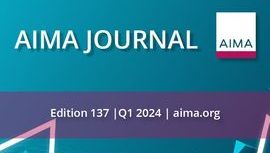Private credit through the pandemic and beyond
By Belle Kaura, Third Eye Capital
Published: 20 September 2021

Private credit has been tested, there was uncertainty early in the pandemic about how the asset class would fare. Fears of a global loan default crisis were quickly cast aside as liquidity flooded the market. After the initial shock, financial markets rallied on the back of massive monetary and fiscal stimulus. Despite an early pause, private credit prevailed, bouncing back and deploying over US$100 billion in 2020.
Private credit held strong through the global crisis, resoundingly proving its resilience and value as a vital part of the financial ecosystem. Lenders acted swiftly and decisively to support borrowers, providing flexible and creative financing to survive and grow. Deploying capital with speed and scale to meet new situations. Critics were silenced as the question whether the asset class could withstand a downturn was unequivocally answered. Performance through the pandemic solidifies its place in investor portfolios and demonstrates its vital role in the real economy.
The pandemic sharpened focus on performance and manager selectivity. Private credit had a strong start to the year gaining 3.24% in Q1 bringing trailing four quarter returns to 14.41% - a complete turnaround from a loss of ll 6.80% in Q1 20201. Funds raised in the US in the first quarter of this year declined sharply to 34, the next lowest number was 56 in 2019. Capital raised in North America was US$29 billion, only slightly lower than first quarters dating back to 2018, signalling an end to the worst of the pandemic. There is a trend toward larger funds with established managers who can write big tickets. Average fund size hit the US$1 billion mark, more than double 2016 figures. Larger deal sizes are driven by the sheer volume of capital flowing into private credit. Scale matters, leading to enhanced returns through access to better quality investments, more control, and the ability to invest across the capital structure.
The pandemic-induced dislocation was short-lived. Deal pipelines ballooned at the onset but markets quickly normalised. There was a brief window to capitalise on opportunity sets and pick up other lenders’ sell-offs, in contrast to the Global Financial Crisis (GFC) which lasted around15 months. Opportunistic firms with flexible capital took advantage of the deal window, but most sat on the sidelines playing defence when the crisis hit to assess impact and nurse portfolios back to health. The middle was left out in the cold as support targeted very large and small businesses. Lenders gave stressed borrowers relief through covenant waivers, amendments and re-sized financial commitments. Defence has now shifted to offense for managers with dry powder to seize on the influx of deals. Patience and prudence in capital deployment will be key.
The pandemic’s impact was bifurcated, from complete loss of demand to the positive effect of new trends (e.g. healthcare, technology). User activity spiked for home-based services. Forced innovation drove some to gain from new dynamics. In a post-COVID world, new normal sustainable structural changes will serve some industries but exacerbate the decline of businesses negatively impacted by shifts in consumer behaviour.
For many, the disruption is temporary andbusiness will return to normal in the aftermath of the pandemic. Hard-hit sectors still have a long road to recovery. Even high-quality, viable businesses are stranded, in need of short-term help or patient value-add capital. Businesses suffering from continued disruption need capital to survive while others need capital to grow. Loans to grow sectors (ie. technology and healthcare) will be return enhancers. Some managers may turn to defensive and counter-cyclical industries. Distress is in high demand but all-weather perennial investing is tried-and-true at providing steady returns without relying on fleeting episodes of market distress that demand impeccable quick reaction to a crisis.
Insolvencies and delinquencies rose last year. Net equity worsened as debt cushions fell leading to lower credit recoveries. We witnessed the most severe tightening of lending conditions and the largest decline in business growth since the GFC. Loan documentation was tighter and borrowing costs soared making spreads higher. US bankruptcies were up 20%, surpassing 600 and reaching their worst levels since 2009; more than a thirdof Russell 3000 companies were unable to service debts.2 Middle-market defaults neared GFC levels. Similarly in Canada, CCAA filings doubled, energy restructurings doubled and retail tripled. 3 Business loan growth at banks fell six consecutive months. Banks provisioned loans at 20x the pre-pandemic run rate but are now reversing loan loss provisions as economic duress eases.
Defaults are down as the economy rebounds due to easing monetary policy and subsiding COVID concerns. Defaults fell to 2.4% in Q1, down from 3.6% Q4 2020 and a high of 8.1% for senior secured mid-2020.4 Outlook for small business and households is better than forecasted. Pent-up consumer demand is driving a bounce in revenues making most loans perform.
Formidable government stimulus and lender forbearance successfully minimised delinquencies and staved off a massive default crisis. The scale of rescue financing plays originally forecasted have not materialised. The pandemic should have forced some businesses to close up shop and exposed weaknesses of troubled companies. Central bank rescue efforts created false security, impeding real price discovery by putting an artificial floor on asset prices. If it were not for tremendous amounts of stimulus we would be witnessing a tsunami of defaults.
Liquidity pumped into the market could delay the default cycle by as much as two to three years.5 Non-performing loans are expected to start rising next year. 92% of investors expect insolvency and restructuring opportunities over the next 12 months, 22% believe they will be significant.6 What was thought to be a once-in-a decade distress opportunity could span a few years. The credit reckoning has been postponed not cancelled. Leverage multiples are up significantly. Artificially low default rates and high asset prices are masking true creditworthiness. Businesses are relying on the low cost of debt and turning to more financing to survive. In the US 20% of heavily-leveraged businesses cannot meet their debts through cash flow.
There was latent distress in the market pre-COVID. Record high debt levels, low operating margins, and poor interest rate coverage ratios globally could lead to long-term impacts. Sectors most impacted by the pandemic could suffer permanent erosion in enterprise value even after full economic recovery. Businesses have a temporary reprieve but will face pressure when fiscal support stops and underlying stresses surface. The backdrop of major sector disruptions, weak credit fundamentals, and greater amend and pretend activity will eventually overwhelm companies with excessive leverage and pose existential threats to businesses and their capital providers. Businesses unable to handle higher debt loads will undoubtedly face restructuring. Once stimulus fades a windfall of distress, rescue financing and M&A opportunities will befall private credit.
Confidence in lender recovery is low. Less than half of investors are confident lenders can manage loss recoveries, that number is even lower for lenders with under 10 years of experience.7 Competition precipitated entry into complex pre-pandemic loans. Conflict among lenders is escalating as they seek to enforce loan security. Not all managers are created equal, simple liquidity providers will be challenged. Lenders unequipped for contentious, lengthy, expensive restructuring and court battles will be tested, giving experienced counterparts an opening to purchase their credit exposures. The right lender can unlock unharnessed enterprise value and engage in active value creation to deliver outsized returns. This has ancillary positive effects on other stakeholders and the real economy.
Retrenchment of banks is a global theme. Banks are getting more conservative. This creates a void that private lenders can fill as businesses adapt and rebuild in the aftermath of COVID. Secondary market opportunities are emerging as banks cut supply and de-risk by offloading non-performing credit at a discount. A known loss being preferable to the risk of a fire-sale. Capital charges and high-risk weightings inhibit banks from being rescue financiers and debtors-in-possession.
US banks are facing increased regulation. Private lenders don’t face the same regulatory constraints. Cycle-tested lenders with turnaround skills are more suited for distress situations being relationship-minded, creative and expedient. This is a pivotal inflection point for Canada, where private debt makes up only around 5% of the market. The lower risk appetite of banks is paving the way for expansion and evolution of the asset class. Private credit assuming a larger market share will create a more diverse and vibrant financial system.
The outlook for the asset class is bullish. There is a movement away from the risk and volatility of public markets. Private markets afford a respite from market flux and immunity from monetary policy and reactionary fund flows. Longer duration and lock-up of capital allows investment in higher return opportunities and yields significant illiquidity premiums. Private markets are an ever-increasing component of the economy with half the number of public companies as a decade ago. Private debt is primed to grow in tandem with private equity.
Investors are hunting for yield in private markets driven by a need for higher absolute returns and diversification. Market conditions are calling investors to action with over-inflated equities, long-standing low yielding bond markets and failure of absolute return buckets to meet expectations. Private debt is the logical solution, historically outperforming other asset classes. After historical lows for a decade, interest rates are experiencing upward pressure. Reflation signals economic growth. Private credit acts as a hedge to inflation, pricing can be fixed, and rising rates are positive for floating rate debt.
The pandemic revealed shortcomings in credit underwriting and monitoring. There is a reversal of pricing pressures, yield compression and cov-lite trends that shaped the market pre-COVID. The intense competition that created a buyer’s market is waning amid consolidation. The pendulum has swung to a lenders market where they call the shots. Lenders are in the drivers’ seat, enjoying better terms and more protective covenants as they raise the bar on underwriting. As economic confidence is restored, spreads are tightening from crisis-highs as lenders start to reward borrowers, but yields are still much higher than pre-pandemic.
Capital raising is at record levels, on track to hit US$1.4 trillion by 2025. This could be conservative as it assumes only an 8% share of alternatives. Canadian pensions’ private credit allocation is 14-18%. Private debt is growing at almost double the rate of private equity. It is a maturing asset class. Globally, only a third of institutions are invested, allocations are rising. The US is dominated by sponsored lending, a fraction of available business. Trillions of dollars of generational wealth transfer over the next decade means vast financing opportunities. Compelling features are attracting new investors. Untapped investor pools present growth avenues as investors build global direct lending portfolios. Private credit is entering its golden age on the back of solid tailwinds propelling expansion. It will continue its upward trajectory as positive credit conditions persist.
References
- Cliffwater Index 2021 Q1 Report on US Direct Lending
- S&P Global Market Intelligence “US Bankruptices surpass 600 in 2020 as coronavirus-era filings keep climbing”
- Office of the Superintendent of Bankruptcy Canada – Insolvency Statistics
- Proskauer Q4 Private Credit Default Index; Proskauer Report “Warning Companies Not Out of The Woods Yet”
- Bloomberg, Liquidity Will Delay Default Spike for 2-3 Years, Ares CEO Says, April 13, 2021
- Proskauer Q4 Private Credit Default Index; Proskauer Report “Warning Companies Not Out of The Woods Yet”
- Ocorian Study, May 2021








